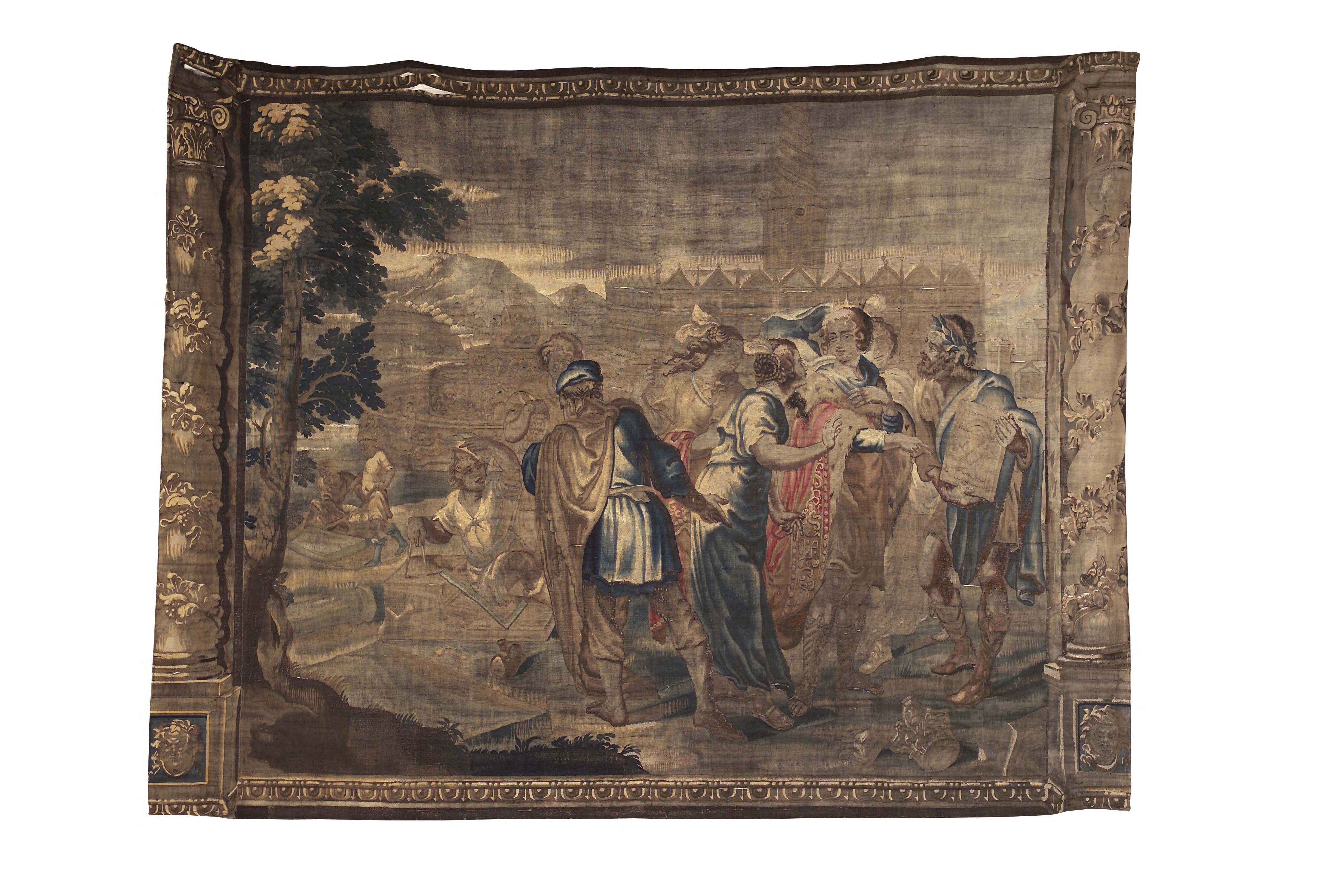THE BUILDING OF BABYLON A late 17th century Antwerp tapestry from the Wauters workshop, †
Auction: 9 December 2005 at 11:00 GMT
Description
after the cartoons by Abraham van Diepenbeeck (1596-1675), woven in wools and silks, from the set depicting the Life of Semiramis, with Queen Semiramis being shown the plans of the city, in an architectural border framed by Solomonic columns
Dimensions
310cm x 396cm
Footnote
Provenance: The Dukes of Hamilton, The Palace of Holyroodhouse, Edinburgh
Note; These tapestries were historically in the apartments allocated to the Dukes of Hamilton, Hereditary Keepers of the Palace of Holyroodhouse, the principal Scottish palace of the Crown since its rebuilding after the restoration of the monarchy under Charles II. After a dispute over ownership of objects at Holyrood in 1906 two panels from this set were allocated to the Crown as part of the settlement. These two panels, The Triumph of Semiramis and Semiramis Levelling the Roads, are still in the Queen's apartments at Holyrood.
The tapestries were removed to Lennoxlove, East Lothian, the present seat of the Dukes of Hamilton, later in the 20th century and are now being sold to help fund the imminent restoration of Lennoxlove.
The celebrated Hamilton Palace was the principal seat of the Dukes of Hamilton until its demolition in the 1920s. It too was rebuilt at the end of the 17th century and it is possible that these tapestries may have been there originally, although we have not been able to trace their earlier movements.
Semiramis, Queen of the Assyrians, lived nearly three thousand years ago and was reputedly the builder of Babylon. She was said to be the daughter of a sea goddess and a mortal, and having been abandoned by her mother on the foreshore was rescued and brought up by doves. A shepherd Simma found her and being childless, took her as his own. She married first Memones, an officer of the Assyrian King Ninus, but her daring attracted the King's attention and he later married her. After his death she became Queen.
There are ten known panels from this set, including these two (lots 201 and 203) although only eight cartoons are recorded in the inventory of the Wauters workshop taken in 1679. To this our third panel (lot 202) can perhaps be added, although it may be from a different set produced by the workshop with the same borders.
Literature; Margaret Swain Tapestries and Textiles at the Palace of Holyroodhouse HMSO 1988 pp28-29

